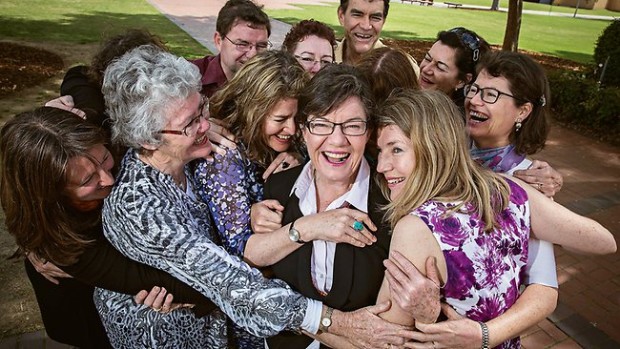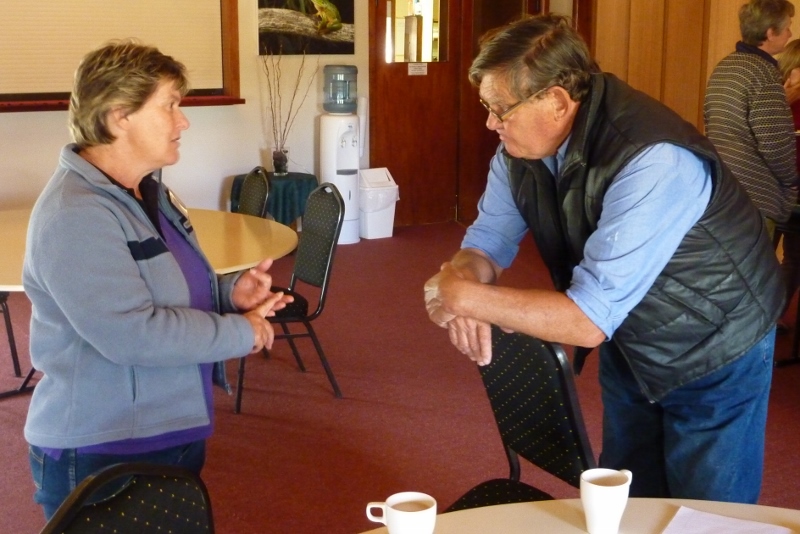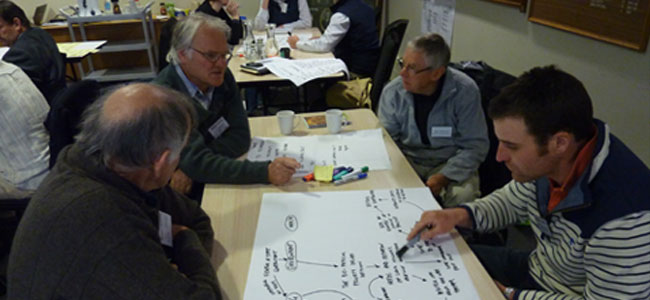I recently missed out on getting a Corangamite Catchment Management Authority (CCMA) contract to develop a Community Engagement Strategy. Gareth Smith, the CEO, rang me Friday afternoon to give me the news. It was good to hear I was in the mix, but deeply disappointing nonetheless to miss the job. It took me a while to get over my disappointment, but when I did, I could see why Engagement Plus got the job and not me. They do one thing, and that’s engagement.
Then I started asking myself what it is I do have to offer at this point in a long and diverse career. Research and design for innovation in governance is what I got to, and the business of making engagement work has deep opportunities for innovation. In this post, I consider one aspect of the Corangamite CMA’s situation in relation to engagement – the place of community profiles.
Through 2013, the CCMA have had a consulting firm, RMCG, profile their community segments; the Community Engagement Strategy will move that through to commitments to specific engagement. I was around in 2003 when the first of such profiles was done for the CCMA, and I know that the profiling study was not well-integrated into the consciousness or decision making of staff at the time. Then in 2005-06, I myself differentiated and interviesed community segments in Corangamite (in a project with regrettably little internal support at the CMA of the time – see Indicators and measures for social capacity in NRM).
As a result, I have a standing question of how such profiles of stakeholders/types of landholder/community segments can be brought into a dynamic relationship with the work of engagement that goes on day-by-day in a program team.
In my bid to the CCMA, I’d suggested some ways to do this. Strategic plans are only as good as the smarts of the teams enacting them, so getting staff wired into development of a strategy is essential. Once you have defined path, things change as soon as you take your next step. Action brings all sorts of new information about the people in the community with whom you are working. The situation itself changes. As this happens, the coarse generalisations of a profiling study, and of the strategy itself, are drawn into a more nuanced understanding of what people think, what they do, and what enables and constrains the trajectories of change you want to encourage.
How can that new experience be brought back into a profile? How do that be done across say, 20 staff, each of whom has their own program-defined brief, each of whom will encounter members of those segments each day as they work? How each staff member’s separate experience of stakeholders be brought back to a conversation between staff.
Are there examples, I wonder, of organisations which have trained their staff to ask salient questions of people/customers as they work with them, and bring this back into some holding and shared understanding of the organisation’s stakeholders, something that refreshes the profile? To begin with, staff would need to have some focus questions around which to draw in the impressions and expression they encounter while interacting with communities and agencies.
Reading Kate Legge’s Yes She Can in this morning’s Weekend Australian Magazine, I was impressed with the power of the kitchen table conversations that underpinned the community inquiry that began the change in the seat of Indi in NE Victoria, and that led to Cathy McGowan’s nomination and election. People were invited to speak to three themes: living in Indi; issues that matter; political representation. They did that locally, in their own homes and meeting places.

- Cathy McGowan with her siblings (and a few nieces) in Albury last month. Picture: Jake Nowakowski Source: TheAustralian
Could we invent a focused inquiry in NRM into the matters that most concern people? I can imagine the conversations, and the questions that would open these up, but the stumbling block I see is maintaining the focus of staff on the landholders they are working with, as distinct from the managers they are working for, at several levels (regional, State, national) above the grassroots. Productivist culture, that awful and mindless obsession with reportable outputs, erases attention to what the end user thinks, does, wants, can contribute, is creatively involved in.
Reading Legge’s article on what has happened in NE Victoria, I think the only way knowledge about the community can stay fresh is to shift the whole notion of a profile on its axis, and turn it, as they have in Indi, into a conversation that the community itself owns. No profiles tucked away on agency hard drives: we need a web-based record of what people think on matters of consequence.
Mary Crooks, of The Victorian Women’s Trust, was noted as one of the people who designed the kitchen table conversations behind the Indi shift. Cambell Klose contributed to the digital facilities that supported that groundswell in NE Victoria. I’d be interested in what their experience might bring the NRM field. How might their designs inform the work of a Catchment Management Authority, charged as these authorities are with facilitating action across public and private stakeholders, in pursuit of sustainable landscapes? How might these designs be adapted by the landcare movement, where there is local action, but little linkage across the local?
Starting points for innovation in governance are invariably conversations between people who care about our collective life.



